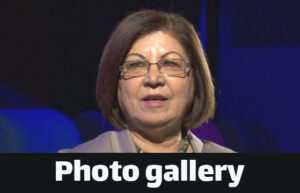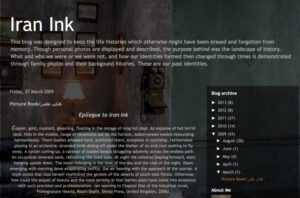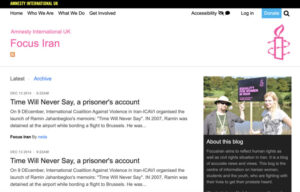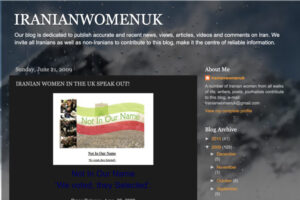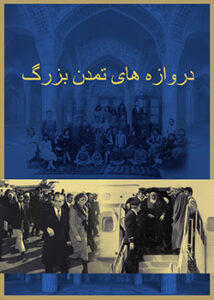Where Is Iran Heading?
Iran: where she goes, where we go?
This article was published in 2012
After 33 years since the 1979 revolution, Iran is a country on the brink of ruins by the collective forces which take their power through a constant state of chaos and disarray backed by the oil income. Though a united, popular force at first, over years, the lack of tolerance had shrunk the core of the Islamic Republic to a few clergy and their relative establishments, atop of whom the supreme leader with 4,000 employees at his court, and the high ranking revolutionary guards and other mercenaries in vast numbers. These have managed to rule Iran through the institutionalisation of the culture of intolerance, intimidation and bullying, both nationally and internationally. But in the words of Hugh Tomilson of the Times Newspaper: “Economy nearing collapse, tussle of power at the summit, the regime is a step short of daily ground to make ends.”
Nevertheless, one must not imagine that it will put down sword and hand over the power to democratic forces and Iranians will live happily ever-after.
However, I will share a few points which seem to me as key elements in the present situation. I have an organisation which works exclusively on violence in Iran and the non-violent ways to resolve conflict. Violence in Iran is widespread, programmed and institutionalised. It is the biggest threat to the structure of the Iranian society.
Iranians are socially, philosophically, educationally and psychologically controlled and guided towards the State’s strategies, beginning at the nursery level to higher education throughout life all of which engraved with an element of violence.
.
Denial the right to freedom of thought, speech and information is the biggest violence against the nation worse of which amongst the ethnic minorities. The Kurds believe they are treated as enemies of the state. Azaris, Turkmen, Arabs and the Baluchis are under constant pressure and denied their rights. This applies to minority religions such as the Jews, Assyrians, Christians, Zoroastrians and even Dervishes not to mention the Bahais who are widely persecuted. At the moment Yusef Nadarkhani is under threat of execution for converting to Christianity.
At the universities human sciences have been under threat of closure for years and women studies departments have either closed down or shrunk to the limit. Distortion in the content of history, humanities and even sciences takes place under various pretexts. Free and uncensored access to means of communications such as the internet and communicating with the outside world are severely controlled and limited for citizens while the state widely uses the same means for its own purposes.
Violation of the basic rights of the young generation is so deep and so widespread that the under forties of Iran often refer to themselves as the “burnt generation”.
Today is the 8 March, International Women’s Day. On such a Day we must appreciate the efforts of the Iranian women who for the past 33 years have relentlessly fought for their rights as citizens and as human beings. Iranian women were the first targets of the 1979 revolution and strategies of gender segregation and sexual apartheid were implemented and institutionalised in all areas of their lives through years. Girls are taught to become women at the young age of 9 and prepare themselves for their designated roles. Recently even the Barbie doll went under scrutiny and branded as improper unless she wears the veil!
Every year, thousand of women are reprimanded, detained and fined for improper behaviour or wearing improper dress in the public. Due to such state of prolonged control and alienation the general spirit of hopelessness has brought widespread depression and the rate of suicide and addiction especially among the young has risen. In the third congress of the clinical psychology in Tehran it was reported that between 15-20% of Iranians are in need of psychological care and treatment which makes about 15 million people. The only area where men and women are equal is detention, imprisonment, torture and execution.
Since the law is gender biased and women do not have the same right to divorce as men, suicide rate especially self-burn has increased among married women. So does acid attacks, honour killings, husband killing, wife killing and child brutality.
Another area which is undetected but has alarmingly increased violence in the society is the implementation of the law of Ghesas or retribution. This law has moved justice away from crime and punishment and handed over the punishment to the victim’s family thus into the private realm. The hidden consequence of such law is the creation of a chain of murderers. One committing an act of violence under certain conditions. The other taking some one’s life sanctioned by the state and in cold blood.
The Iranian society is driven into violence by witnessing violence or experiencing it. Inviting people even children to witness public executions had decreased people’s sensitivity to violence which in the long term has devastating consequences for the society. Psychological and sociological effects of such strategies are yet to be known. Needless to say that recent findings speak of the changes in the brain structure and thus the DNA of children who experience or witness violence.
Iran is a society with too many complexities. It is also a society of two layers. Visible and invisible. On top and at the visible level everything is under control. People are not allowed to have assembly, clubs, associations and societies. Civil society organisations are either closed down or infiltrated and empty of meaning.
Art; film, cinema, music, dance, sculpture, poetry, prose and other forms of human creativity are under constant control and investigation. Recently, in the wake of the film A Separation winning all international prizes, the House of cinema was closed down. In the wake of such restrictions Iran has become like a land sitting on an underground ocean where everything happens but in clandestine. Recently, a young woman who was imprisoned and fled Iran has opened a dance class in one of the European countries and has found fame. Film directors work under the sword of censorship. Some directors such as Jafar Panahi go to prison for their work and others are either in exile or work under strict scrutiny. Still Iran produces one of the best films.
Politically, Iran holds elections: presidential elections, parliament, city and village council elections. It has a judiciary system and so on. But there is one major flaw in all this. All these devices are systematically controlled by the ruling group at the top, who over years have thrown opposition out of their own circle and tightened their reign on power. At present, all these so called democratic devices are controlled by a small faction; the supreme leader and his designated president, Mr Ahmadinejad’s faction who seems to be acting as an unruly, runaway child.
All other political parties which were set up during the short lived so-called reform period are now closed down and banned. Leaders of the Green movement are imprisoned in unknown places denied of any rights. Recent parliamentary elections were a vivid and fresh example of such autocratic rule where the candidates were selected and vetted and those who got the vote are almost all the supreme leader’s choice.
The gravest violence against Iranians is the state of the economy which is near collapse. Inflation, unemployment and sanctions are hitting hard the ordinary Iranians.
I will not go into details of dissent and imprisonment, of those who had been imprisoned for writing an article, speaking their minds, talking their thoughts and are now either murdered or behind bars, of those who were shot in the street or murdered while in detention, of those who were murdered outside the country. Writers, journalists, bloggers, students, lawyers, ethnic minorities, citizens with dual nationality and so on. This part of the tragedy is a well-written, well-documented fact. I will only mention one email that one of the exiled women living in Germany received recently. This seems to be the new phase of expansion of bullying the Iranians outside the country:


